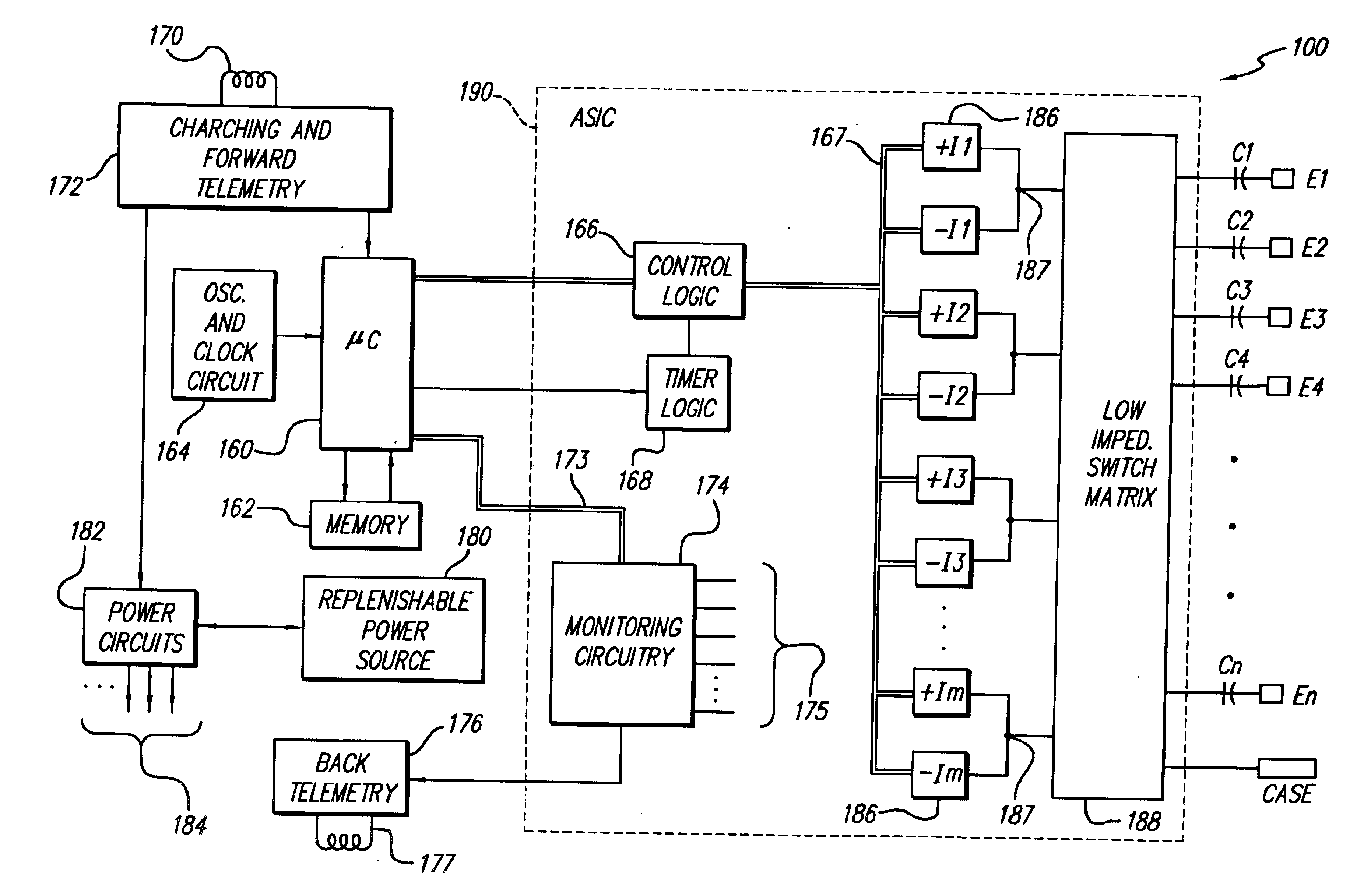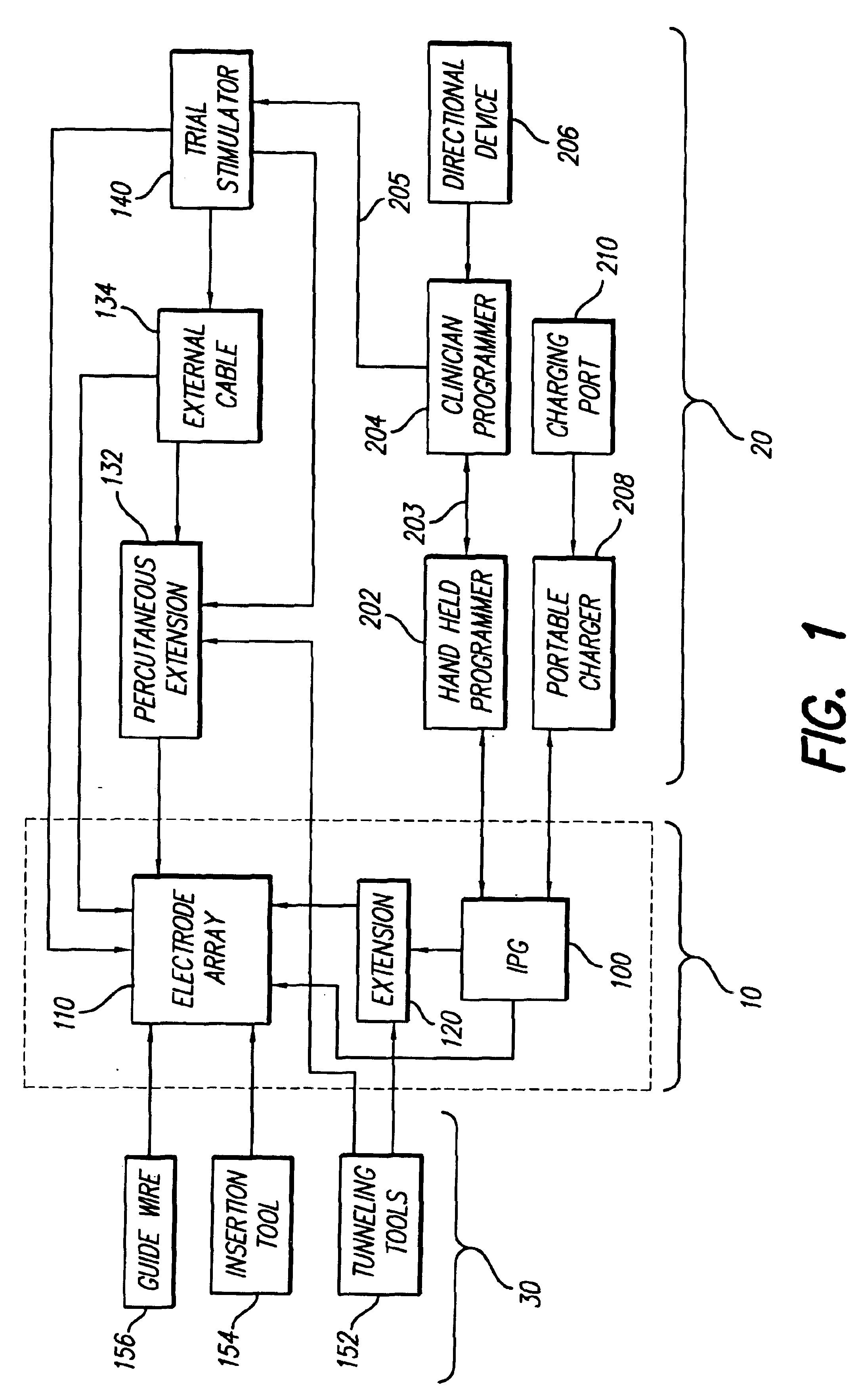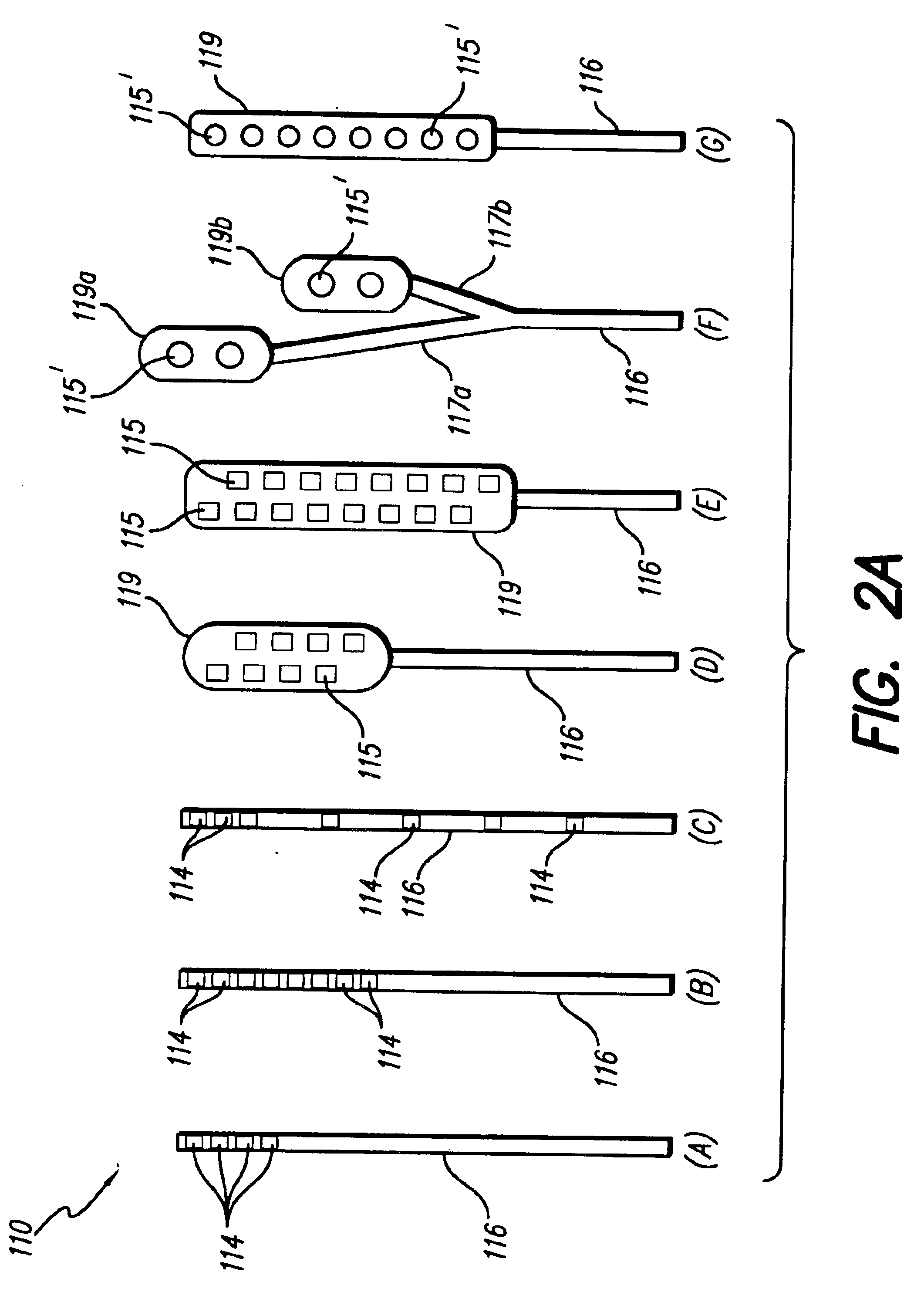Rechargeable spinal cord stimulator system
a spinal cord stimulator and rechargeable technology, applied in the field of spinal cord stimulation systems, can solve the problems of limited battery life, force the patient to wear an external power source and controller, and not all of the above-described features are available in one device, so as to achieve reliable electrode/spinal cord relationship, prevent dislocation, and convenient implementation
- Summary
- Abstract
- Description
- Claims
- Application Information
AI Technical Summary
Benefits of technology
Problems solved by technology
Method used
Image
Examples
Embodiment Construction
[0061]The following description is of the best mode presently contemplated for carrying out the invention. This description is not to be taken in a limiting sense, but is made merely for the purpose of describing the general principles of the invention. The scope of the invention should be determined with reference to the claims.
[0062]Turning first to FIG. 1, there is shown a block diagram that illustrates the various components of a spinal cord stimulation (SCS) system. These components may be subdivided into three broad categories: (1) implantable components 10, (2) external components 20, and (3) surgical components 30. As seen in FIG. 1, the implantable components 10 include an implantable pulse generator (IPG) 100, an electrode array 110, and (as needed) an extension 120. The extension 120 is used to electrically connect the electrode array 110 to the IPG 100. In a preferred embodiment, the IPG 100, described more fully below in connection with FIGS. 4A, 4B and 4C, comprises a ...
PUM
 Login to View More
Login to View More Abstract
Description
Claims
Application Information
 Login to View More
Login to View More - R&D
- Intellectual Property
- Life Sciences
- Materials
- Tech Scout
- Unparalleled Data Quality
- Higher Quality Content
- 60% Fewer Hallucinations
Browse by: Latest US Patents, China's latest patents, Technical Efficacy Thesaurus, Application Domain, Technology Topic, Popular Technical Reports.
© 2025 PatSnap. All rights reserved.Legal|Privacy policy|Modern Slavery Act Transparency Statement|Sitemap|About US| Contact US: help@patsnap.com



